Snow-capped temples and zen atmosphere on the sacred mountain of Koyasan
Read this post on TravelFeed.io for the best experience
.png)
We had visited roughly a temple per day, if not more, since we had arrived in Osaka a couple days before. Yet, we weren’t satisfied yet and when we saw the promotional leaflet for a place called Koyasan, we knew we had to pay it a visit. Of course, we had heard the name Koyasan before more than once. This religious settlement up in the mountainous area of Wakayama was known to be the birthplace of the Shingon school of Japanese Buddhism, founded in 819 by the monk Kûkai upon returning from China, who would later be known as Kôbo-Daishi. It was also a Unesco World Heritage, renowned for its incredible array of temples and sanctuaries.
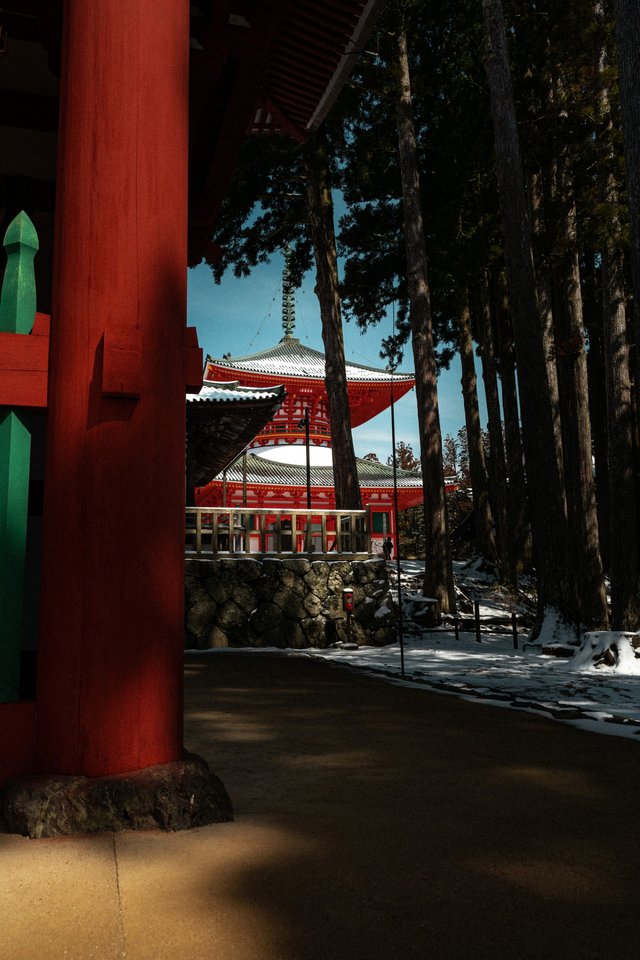
There we were then, riding a train from Osaka station to Shinimamiya first and then a second that would take us to the small station of Gokurakubashi. The trip was fairly long, taking about two hours to complete. As always in Japan though, there was no way to get lost and we only had to follow the huge signs telling us where to go to reach our destination.
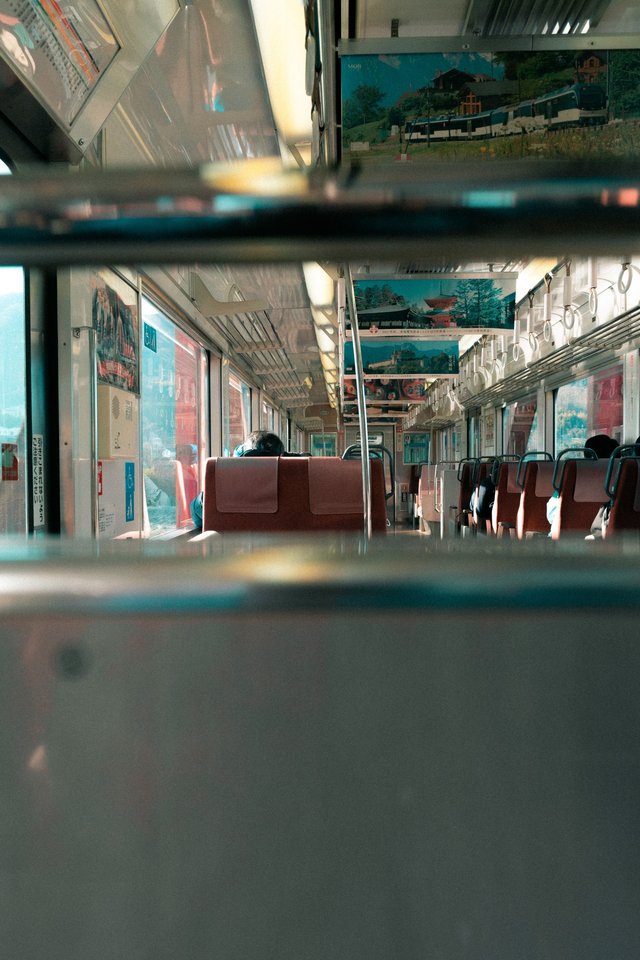
The first leg of the trip was surprisingly pleasant, going through humble-looking villages and old wooden houses scattered in the countryside but the second leg looked even more stunning as we started passing through deep woods and mountainous areas.
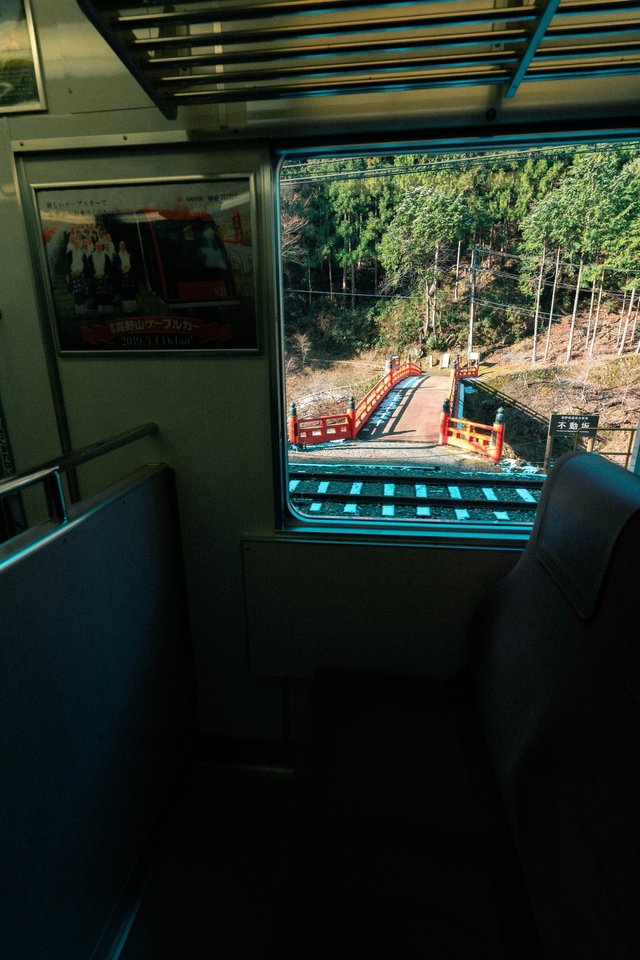
Our train emptied at each station until we were only a handful on the last part of the trip, taking us by cable car from Gokurakubashi to Koyasan. The further we went up, the more our eyes widened as we could see a thick blanket of snow covering the trees surrounding us. It was mid-March and snow was to be expected but we couldn’t have dreamed of better scenery when we first set foot in Koyasan bus station.
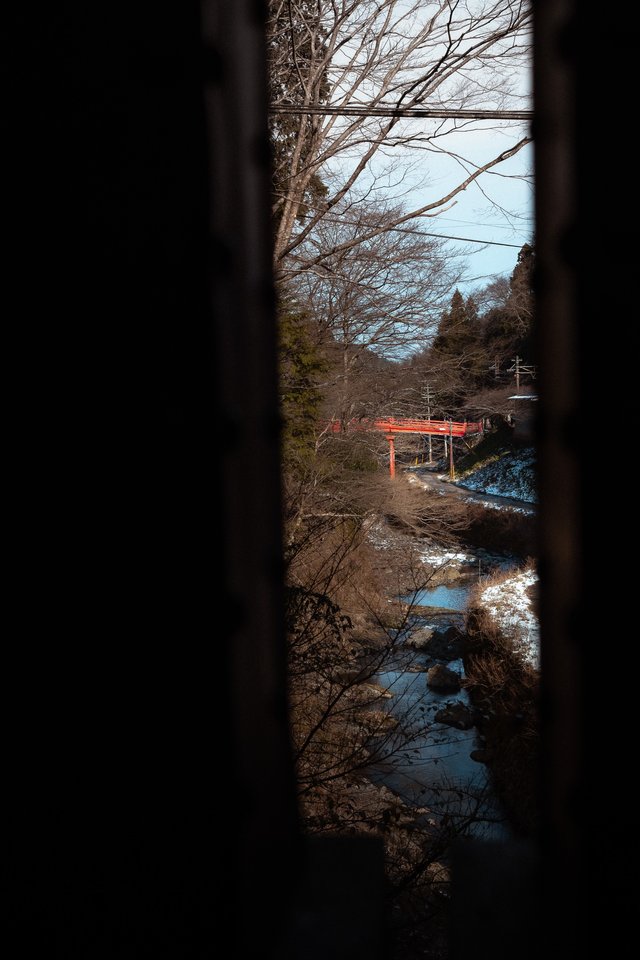
We were the only foreign tourists it seemed, only accompanied by a few local families, solo travelers and a young apprentice monk wearing Airpods. The staff at the station immediately recognized that fact and handed us an information booklet in English, providing us with extra information on which bus would take us where. Thanks to a pass we had bought the day before, we were able to ride the bus at length during the entire day and therefore sat in a comfy bus, taking us to the heart of the village.
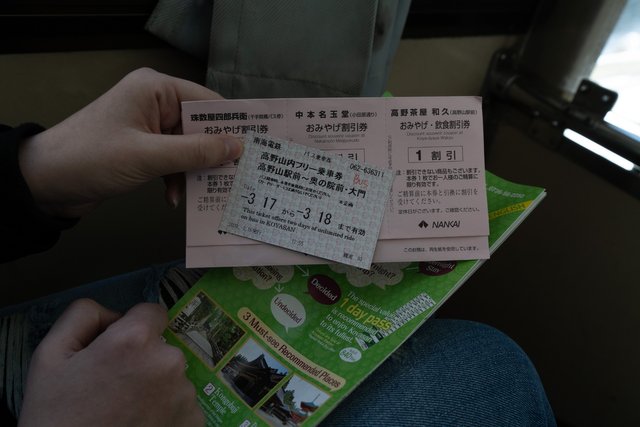
There was no-one in the streets when we got out of the bus. All shops were closed still and the silence was only interrupted by a few passing cars every once in a while. Still, we patiently waited at the first zebra crossing, even though there was literally not a soul around, which hurt our undisciplined French selves a bit. It didn’t take us a lot of purposeless walking around to find the first temple of the day, which stood a few minutes away on foot from the bus stop.
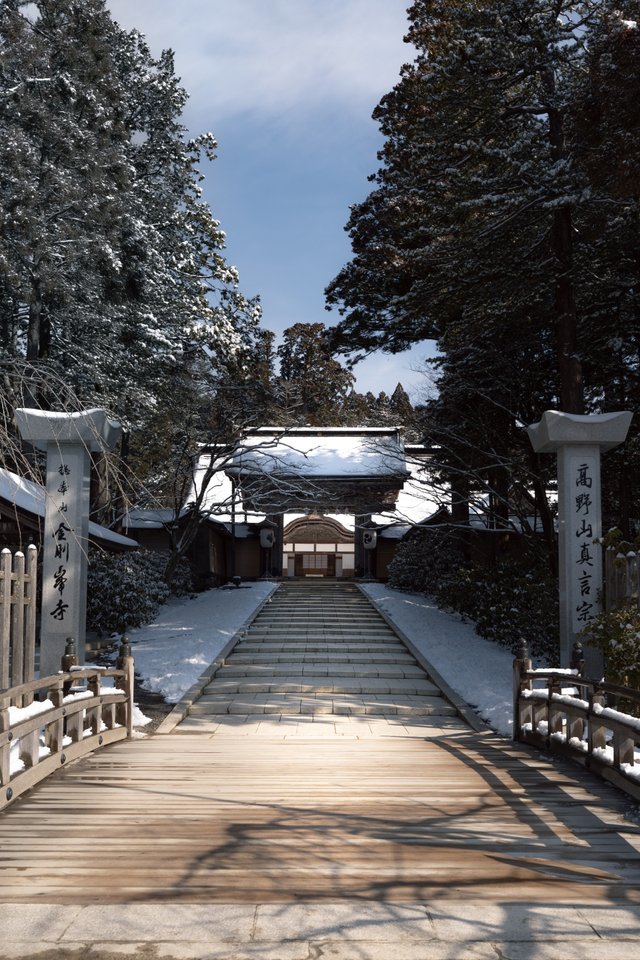
Koyasan’s head temple, the Kongôbuji, was its main tourist attraction. Yet, as we climbed the stairs and entered its courtyard through an ornate wooden gate, there was only in there a member of staff removing snow from the main paths. To keep him company, there was also the cheery cardboard figure of Koya-kun, the town’s mascot, although it made for a rather bland party. All in all, we had the temple for ourselves for a while and toured its courtyard, admiring the intricacy of the buildings’ wooden architecture and the details of their roofs, from which dragons seemed to be ready to breathe fire.
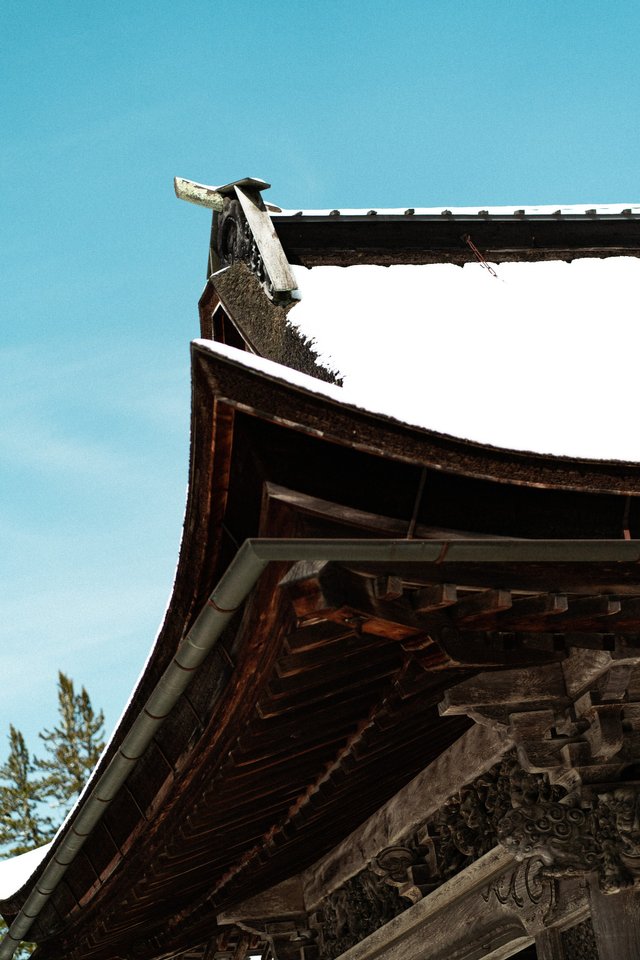
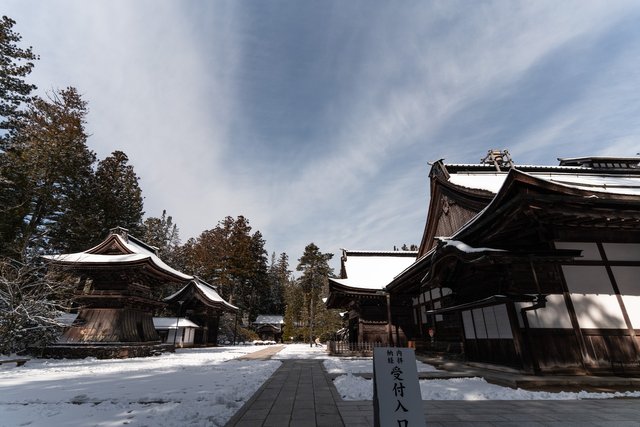
Visitors were also allowed within the main temple, provided they wore a pair of slippers, which proved to be the coldest slippers we had ever worn. The inside of the Kongôbuji was a maze of delicately decorated rooms, adorned with detailed folding screens telling the story of Kôbô-Daishi, endless corridors and zen gardens made of rocks and pine trees.
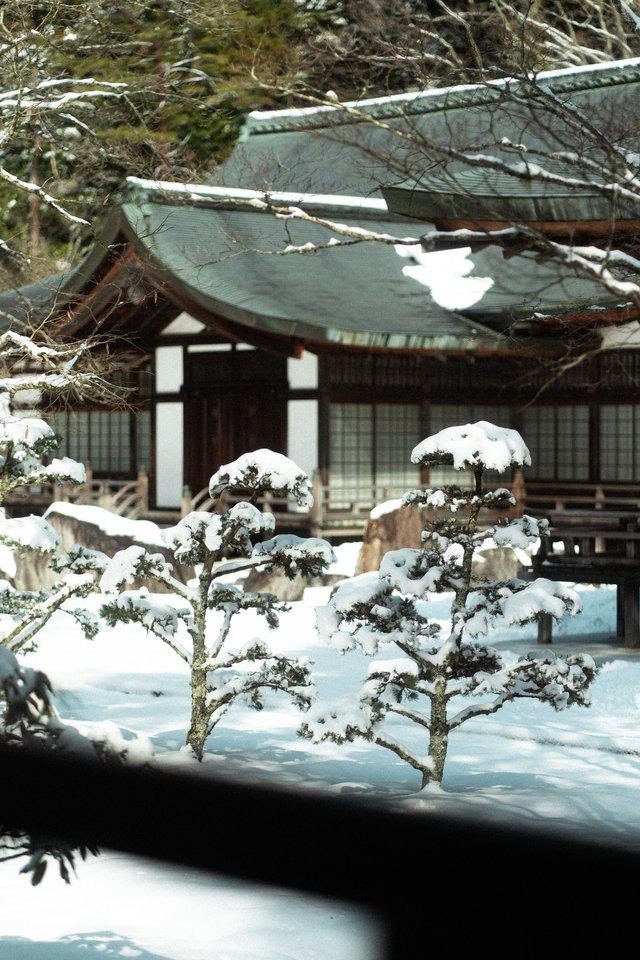
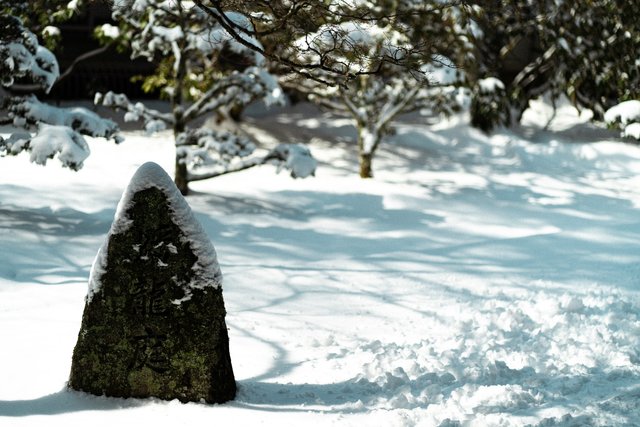
The snow-covered rocks and silent, peaceful atmosphere of the early morning combined to create a soothing atmosphere that was barely describable. There was something magical in roaming in slippers the wooden corridors of a thousand years old temple blanketed in pristine, immaculate snow, whose serenity was an invitation to meditation.
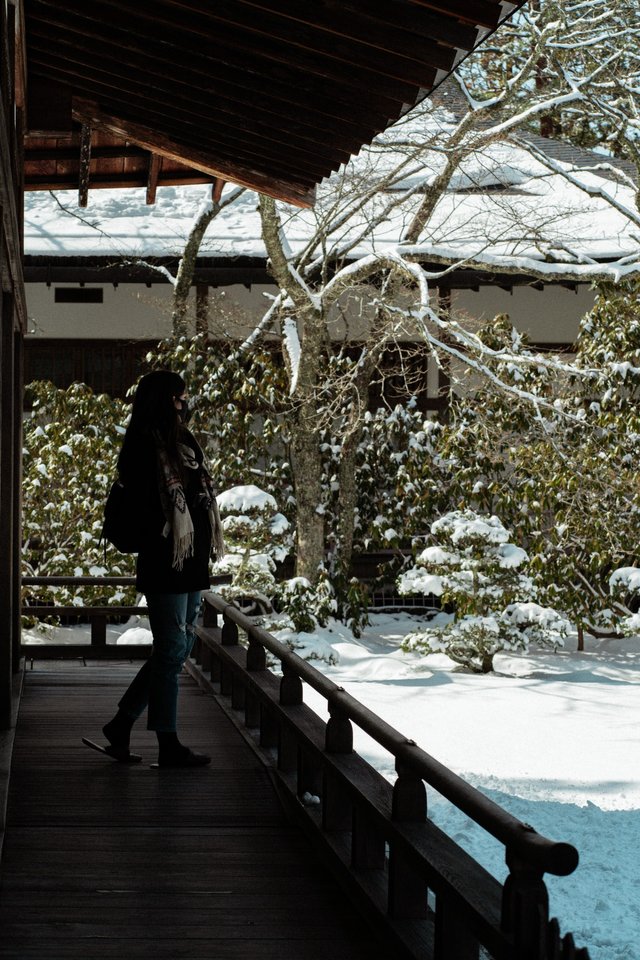
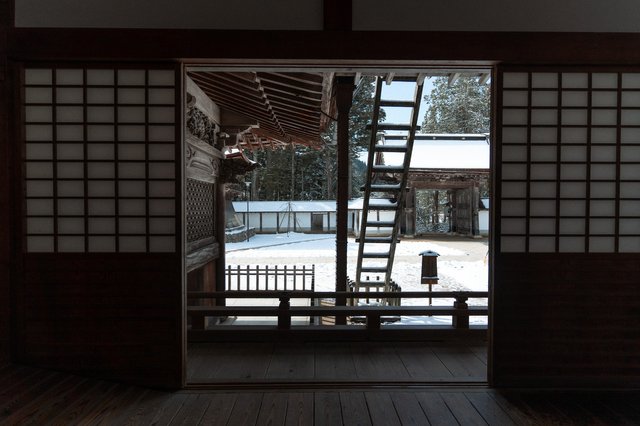
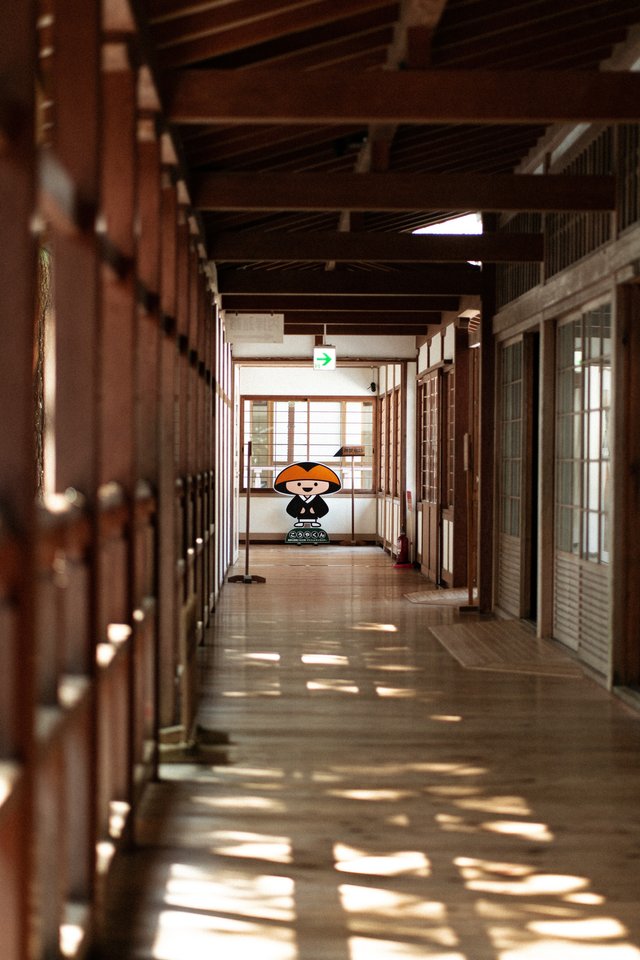
Despite the beauty of snow-capped gardens and wooden buildings, we couldn’t deny that the place was freezing cold and therefore took great comfort in the hot green tea and the cookie we were offered by a member of the staff, who then introduced us to a great hall where some sort of electric brazier was waiting to warm us up. A cute kid wearing a sloth backpack and his mom were our only company during the few minutes we relaxed and kept our hands warm before facing the cold again.
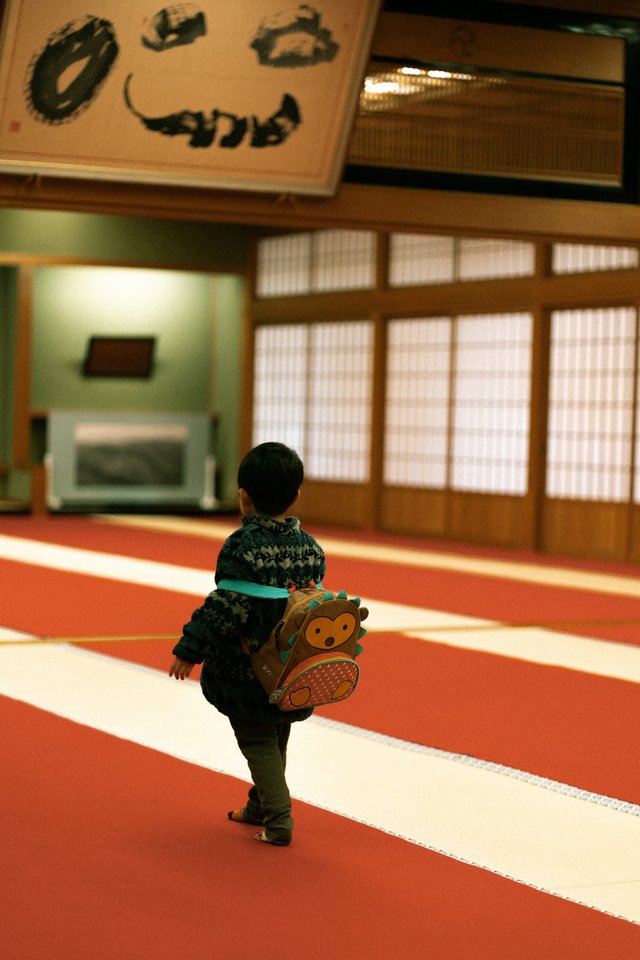
As we left, we crossed path with a group of hikers and another group of local pilgrims chanting prayers, reminding us that Koyasan was an important spiritual spot at the crossroads of the pilgrimage trails of Kumano Kodo.
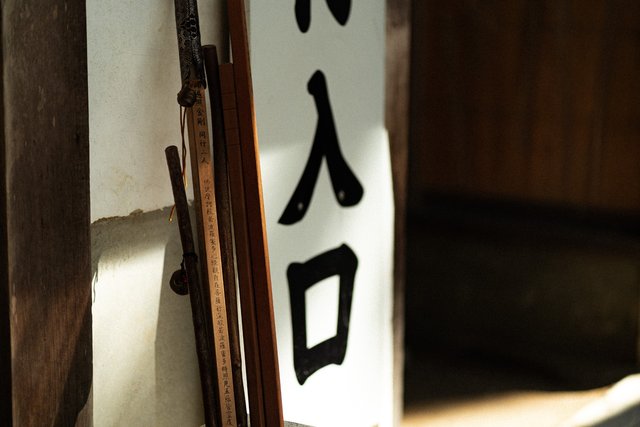
Our next stop was an equally as significant temple complex but it took us longer to reach it as we stopped every now and then at a quiet temple turned into a shukubo, a lodging set within a temple, or on a scenic crimson bridge.
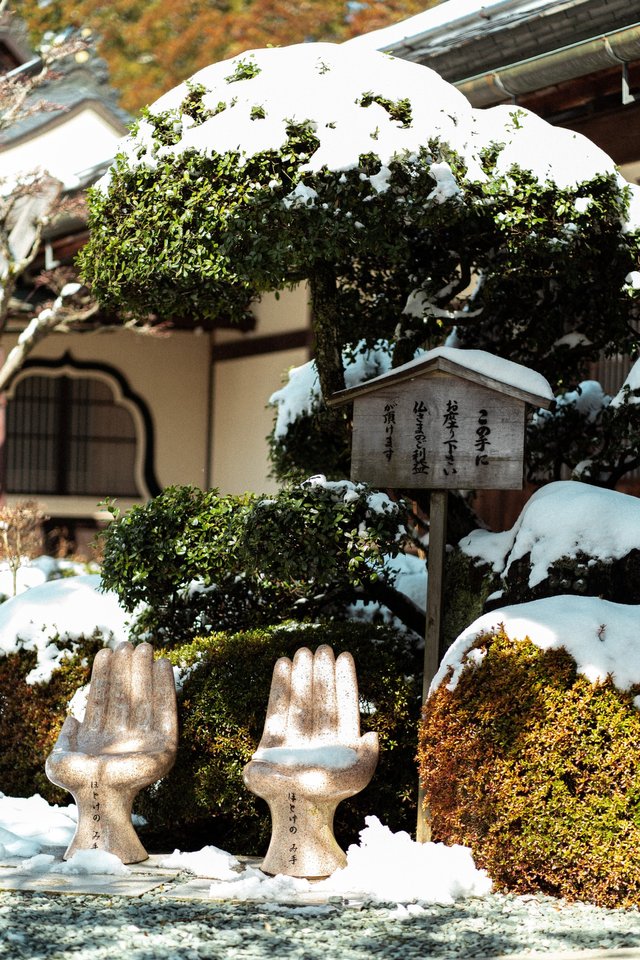
The Danjo Garan complex was not far from the Kongôbuji anyway and it wasn’t hard to spot either. The bright red shape of the Konpon Daitô, the Great Pagoda, wasn’t easy to miss indeed. Although a bit more crowded, as in there was already a dozen visitors there, the complex exuded the same serenity, despite being a bit tricky to wander around since snow was starting to melt, making all paths and stairs quite slippery. We first went through the crimson Chumon gate, which led us inside the compound and to the wooden temple of Kondo, then on to the pagoda.
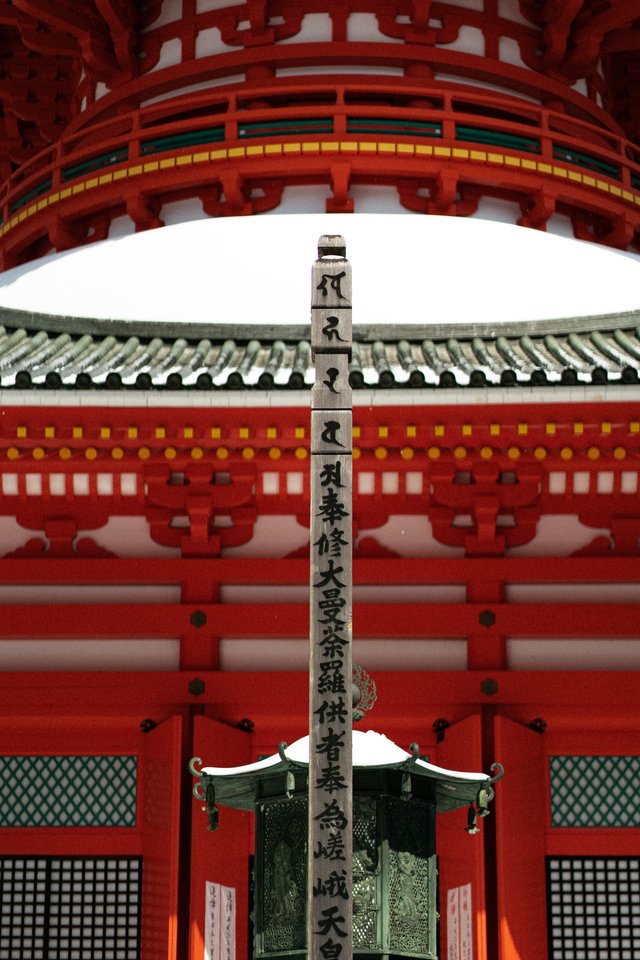
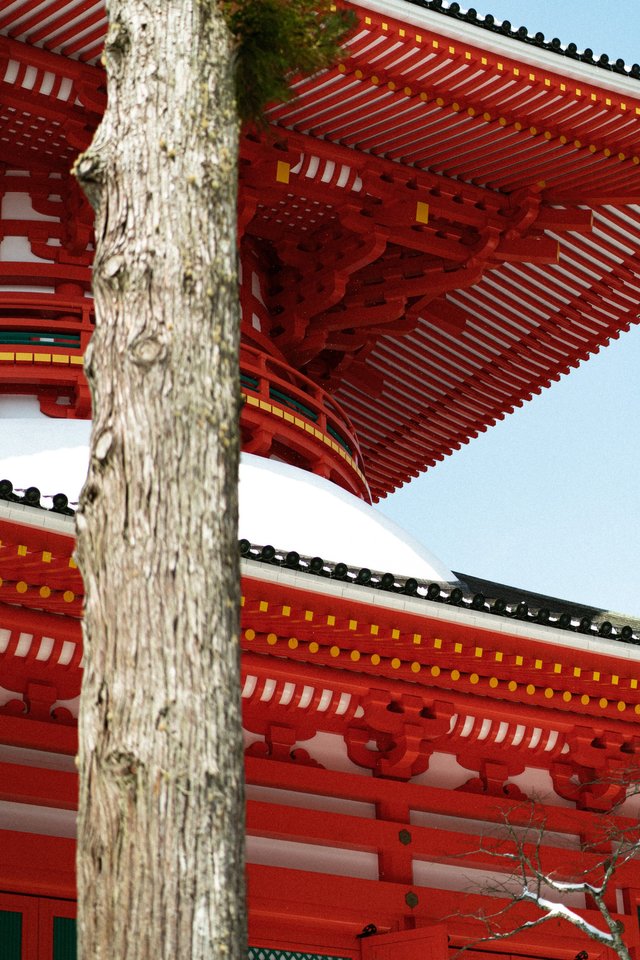
Contrary to the Kongôbuji, we didn’t enter any of the buildings. We wanted to, up until a loud sound that seemed to come out of nowhere startled us. That was when we saw a massive pile of snow crash down on an innocent visitor, melting from the roof of the pagoda. We decided it was best to stay away from the avalanche and stuck on the regular paths leading to the different temples, following around the orange gown of a monk who stopped in front of every building to chant prayers.
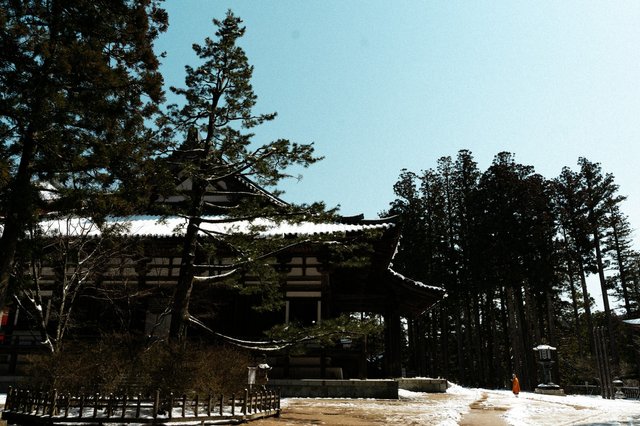
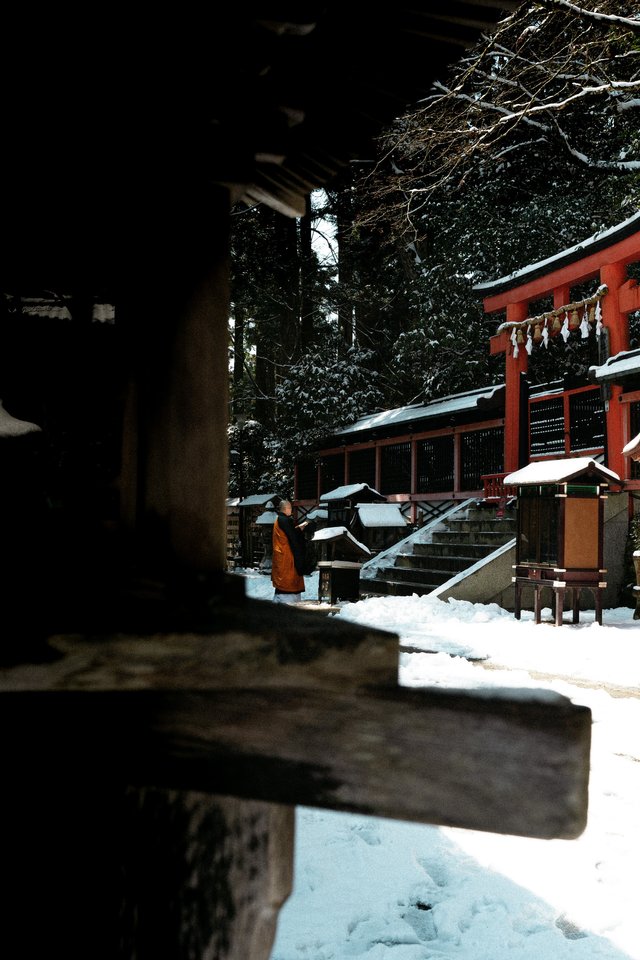
Our path then took us to another crimson gate at the far-end of the town, the Daimon gate, where we soon escaped the same relentless snowy attacks and headed towards a snow-covered path to the mountains, leading to the remote temple of Otazuke Jizo, which was said to grant wishes. An elderly couple was already there and we waited for our turn outside the temple before we could enter, clap our hands and ring the bell, hoping our wishes would come true. If anything, our wish to discover the authentic face of Koyasan, away from the crowds and oozing an enchanting atmosphere sure had been granted.
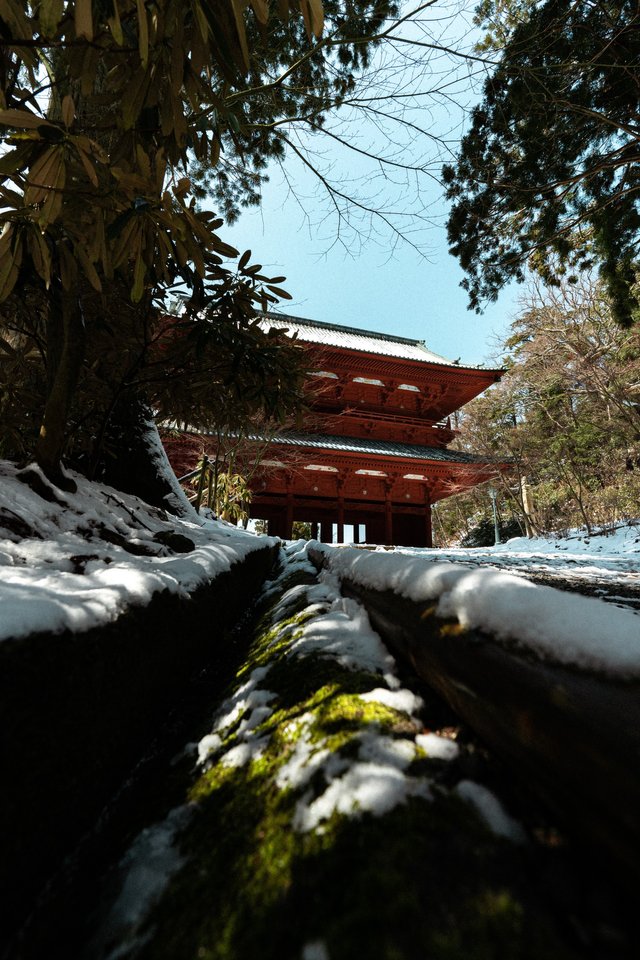
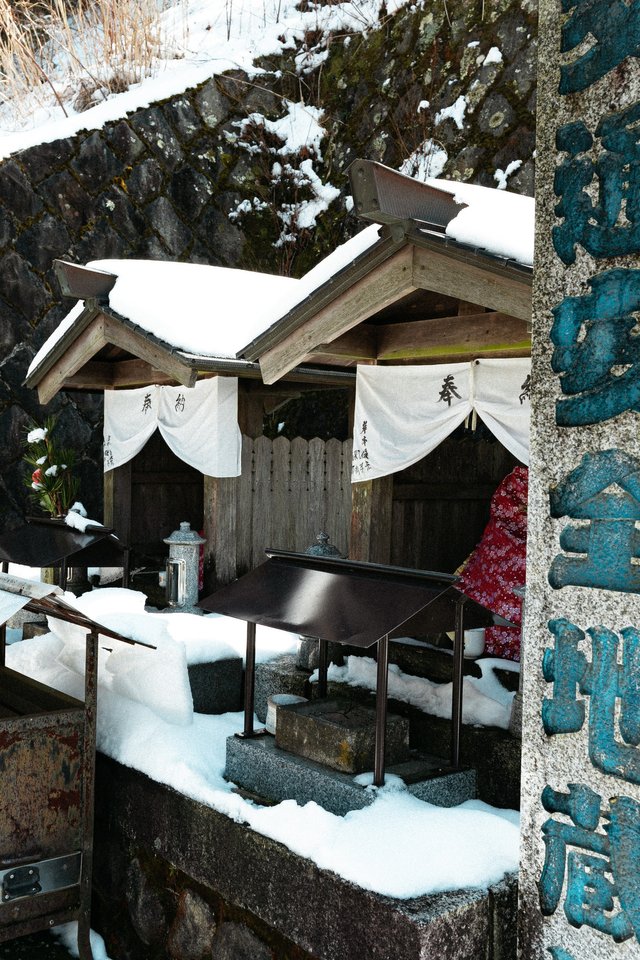
There was one last stop we had to make before our trip would come to an end though and it was the Okunoin cemetery. A local bus took us there in no time, along with a bunch of other foreign tourists. Okunoin was the largest graveyard in Japan. Sure, that sounded a bit ominous, and also quite peculiar for tourists to flock there, but it was also the site of a mausoleum to Kôbô-daishi. The mausoleum was far-off the main entrance, only to be reached by walking through the cemetery.
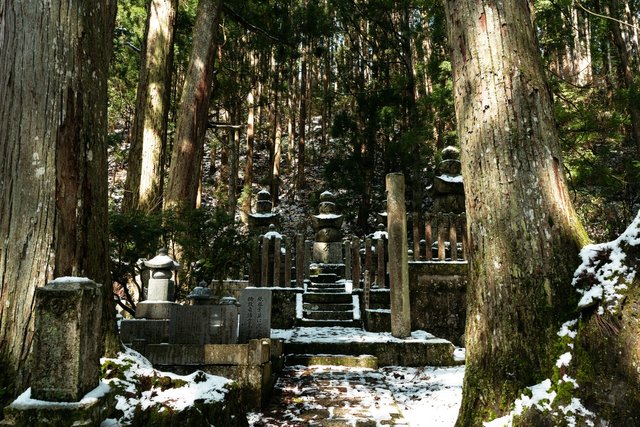
A sacred place for the faithful and a massively popular pilgrimage spot, there was nothing gloomy about Okunoin, as we quickly discovered. From the entrance located near the bus station to the Ichinohashi Bridge leading to the mausoleum, we walked through the graveyard, in between ancient graves covered in moss and snow-covered Jizo bosatsu statues, spirits meant to protect the souls of the deceased, under the cover of venerable pine trees and cypresses.
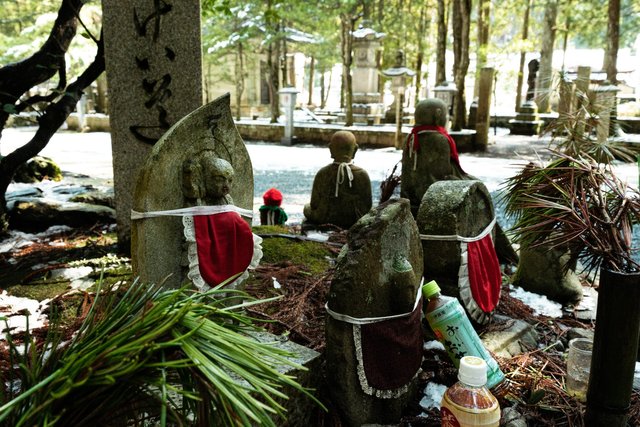
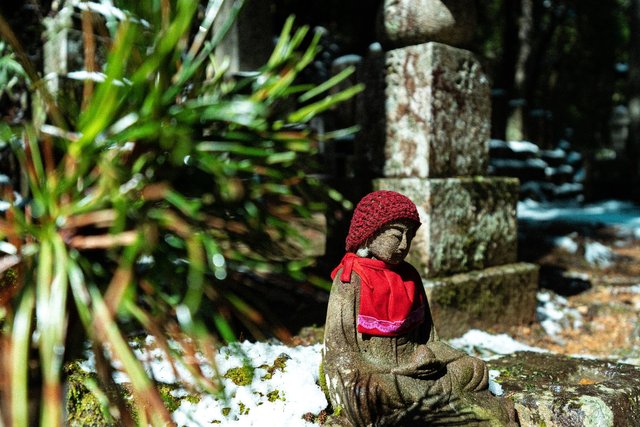
Salary men, elderlies, school girls and pilgrims alike were walking the same trail, drawn to the mausoleum of Kôbô-daishi, a place of worship where we were not to utter a word, let alone take a picture beyond the bridge. Soaking in the spiritually-charged atmosphere of the shrine was on par with the atmosphere of the cemetery though.
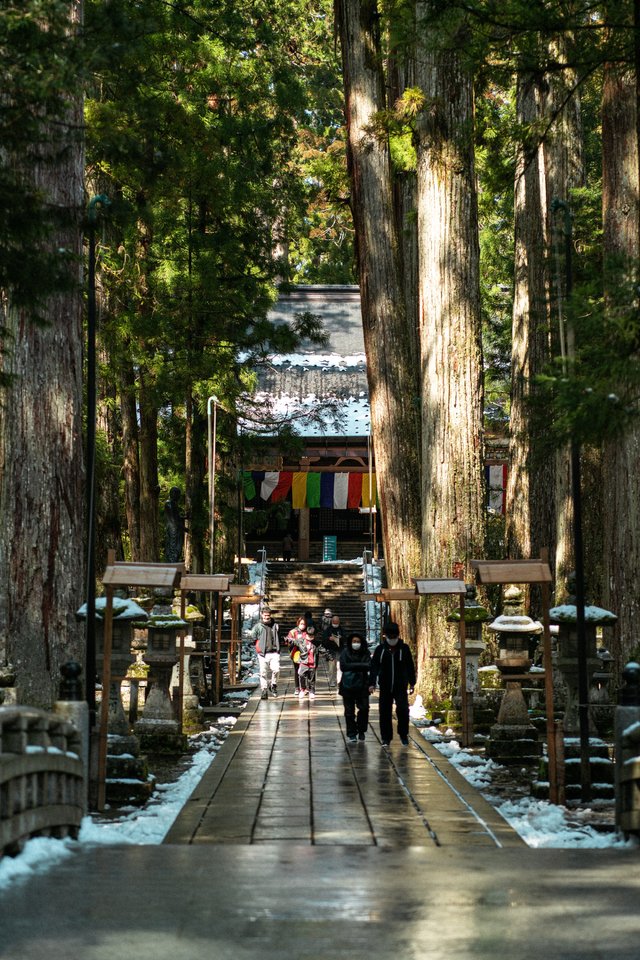
On our way back, we decided to walk on a different side of the cemetery, one that was definitely more contemporary, so much so that we discovered weirdly shaped graves, some looking like they had been sponsored by businesses and companies. Never in our lives would we have expected to see a funeral urn in the shape of a Yakult bottle and yet, here it was. Japan was definitely full of contradictions and Koyasan was no exception to that rule.
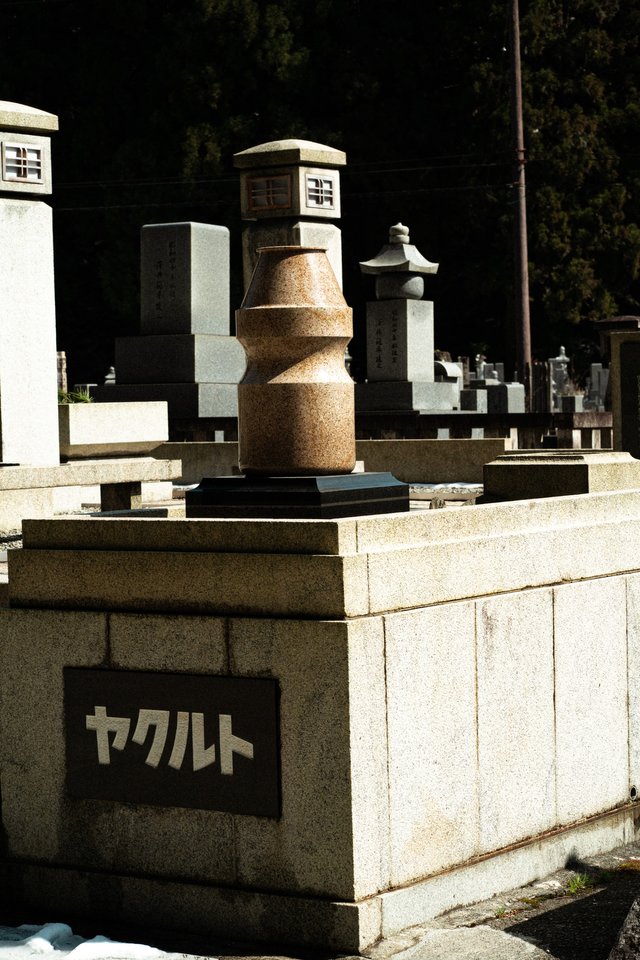
Leaving Koyasan behind, our only regret was not to have stayed at a temple for the night to make the most of the whole experience. Instead, we recalled the memories of our trip over a sushi dinner in Osaka, which wasn’t too bad either!
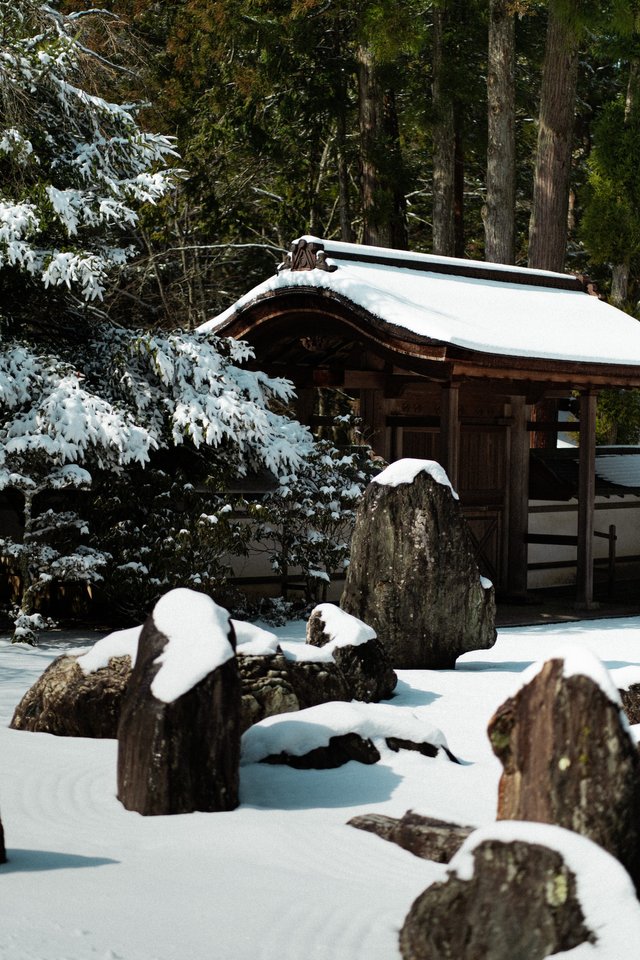
View this post on TravelFeed for the best experience.
WoW, amazing post!!! God job!!!
Thanks :)
good trip~
@tipu curate
!trdo
!shop
!DERANGED
!MARLIANS
!giphy smile
!DPET
!COFFEEA
giphy is supported by witness untersatz!
Upvoted 👌 (Mana: 0/1 - need recharge?)
Congratulations @haydae! You received a sweet smile from TravelFeed. We love your work so keep up the good job. 😊
Thanks for using TravelFeed!
@elsaenroute (TravelFeed team)
PS: You can now search for your travels on-the-go with our Android App. Download it on Google Play